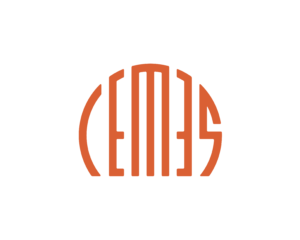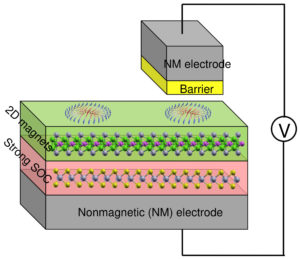Research project selected under the 2022 call for proposals
 Principal Investigator : Li Dongzhe – dongzhe.li@cemes.fr
Principal Investigator : Li Dongzhe – dongzhe.li@cemes.fr
Involved Teams :
- CEMES / MEM Materials and devices for Electronics and Magnetism, MEM
Type of project : Disruptive Project
Date (start/end) : 2022 – 2025

Magnetic skyrmions, topologically protected chiral spin structures with particle-like properties, have attracted tremendous attention due to their potential information storage and processing applications. The main focus of the community so far has been on noncentrosymmetric bulk magnets, ultrathin magnetic films, and multilayers. In this project, we focus on newly discovered two-dimensional (2D) magnets and their van der Waals (vdW) heterostuctures. First, we will employ a combined noncollinear density functional theory and atomistic spin dynamics simulations to obtain optimal heterostuctures that offer great potential for hosting skyrmions in 2D magnets. In particular, we will provide a deeper understanding of the interplay between the Dzyaloshinskii-Moriya interaction (DMI) and higher-order exchange interactions (HOI) for skyrmion stability. After that, selected optimal skyrmion platforms will be sandwiched between two non-magnetic electrodes to form planar tunneling junctions, a technologically promising way for all-electrical detection of skyrmions. For this, we will develop a multiscale ab initio spin-orbit transport modelling platform that enables us to model realistic quantum transport through magnetic skyrmions. This will be done by implementing two unique methods, real-space self-energy and orbital projection techniques, within the non-equilibrium Green’s functions (NEGF) formalism. The noncollinear magnetoresistances will be evaluated by NEGF, going far beyond the often used and less reliable Tersoff-Hamann approximation. With this proposal, we expect to provide society and researchers with competitive modelling tools that can be used to quantify and predict spin-orbit transport properties of magnetic skyrmions in complex 2D magnets and further facilitate the emergence of new key enabling technologies.
